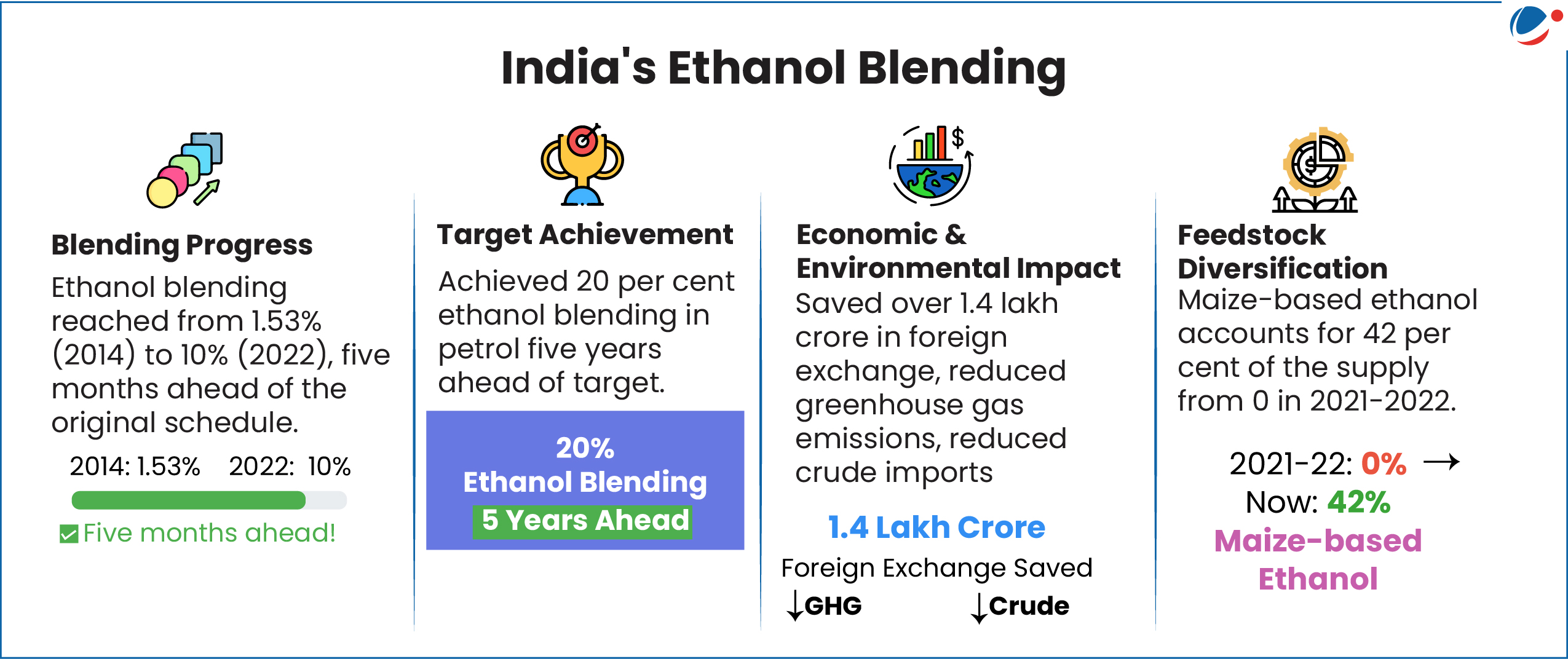Government started rolling out 20% ethanol-blended petrol (E20) in April 2025 which has left vehicle-owners worried about the impact on their older vehicles and about a surge in maintenance costs.
- Union Ministry of Petroleum and Natural Gas, however, clarified that E20 enhances vehicle performance through a higher octane rating and that any perceived loss in fuel efficiency is often due to other factors, assuring the public of vehicle and insurance compatibility.
Key concerns of EBP regarding vehicular compatibility
- Materials compatibility: Ethanol can degrade rubber, plastics, and metals in older or non-upgraded vehicles, causing leaks and corrosion.
- Fuel System issues: Ethanol is prone to water absorption and phase separation, increasing the risk of clogging and fuel system failures.
- Engine combustion and Control: Older or basic engines may struggle with air-fuel adjustments on ethanol blends, resulting in drivability and emissions problems.
- Emissions control: High ethanol blends can increase NOx and aldehyde emissions if engines and materials are not designed for them.
- Legacy and regional fleet concerns: Many older vehicles and two-wheelers lack ethanol-compatible parts, making them less tolerant to higher blends.
About Ethanol Blended Petrol (EBP) Programme
- Objective: Launched in 2003 to promote blending of ethanol in petrol
- Ministry: Ministry of Petroleum and Natural Gas
- Target: 20% ethanol blending in petrol by 2025-26, advanced from the initial timeline of 2030.





